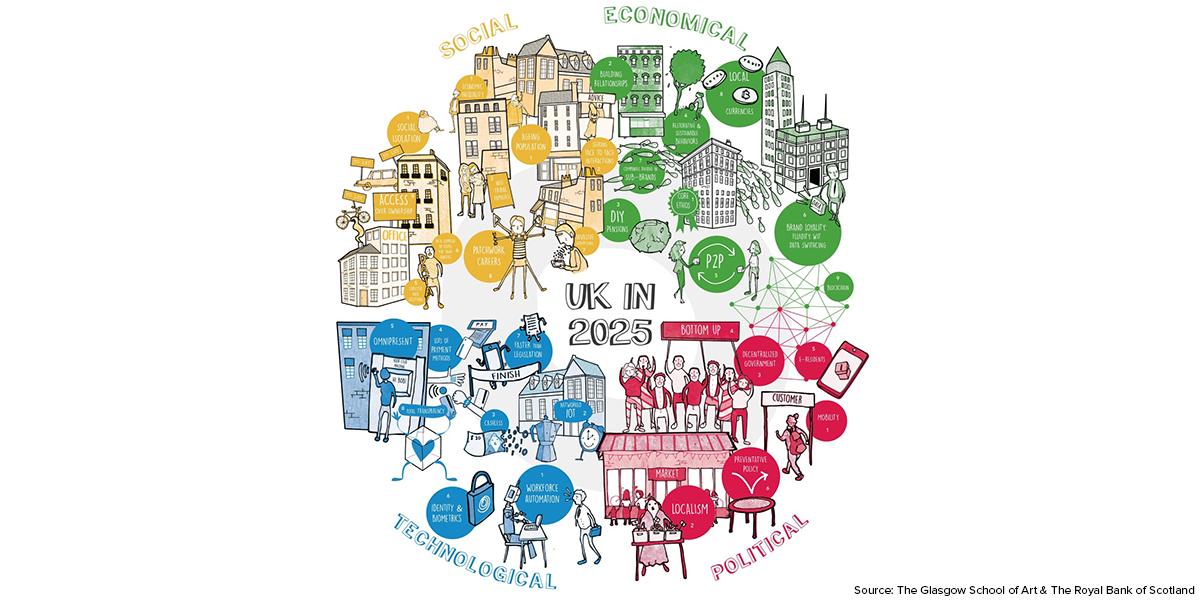Several weeks ago, I had the honor of delivering the closing remarks at this year’s Service Design Global Conference in Madrid.
The theme of the conference this year was “Service Design at Scale”—and over the course of the three days in Madrid, I was inspired by the conference presentations, projects from the Service Design Award winners, and many energizing conversations with other attendees. By the end, I saw four major areas in which the discipline of service design needs to focus in order to be able to scale: technology, ubiquity, coaching, and delivery.
In today’s post, I’ll talk about technology.
Tech topics—including artificial intelligence, big data, the internet of things, and blockchain—popped up much more frequently in 2017 than in previous years.
But I was blown away when Larry Keely of Doblin Deloitte dissected the underlying technology of Airbnb and Uber, exposing the fact that only a small fraction of their respective tech stacks is proprietary. In fact, Uber’s only patent is the feature that lets you know your driver is dropping someone off nearby (which has the maddening effect of undermining Uber’s estimate of when your driver might actually arrive). Larry’s empowering message to everyone in the audience: We don’t need to create proprietary technology to create the world’s next multibillion dollar business—the building blocks are already out there.
Larry’s talk also made me think of technology like IBM Watson and Salesforce Service Cloud in a new way. These full-blown platforms are far more than components of a tech stack, and yet they also act as building blocks by enabling service flows that designers can imbed in larger services. For example, Service Cloud enables physical devices (like a car or refrigerator) to notify the manufacturer when they’re about to go on the fritz. The platform then helps the manufacturer to seamlessly kick off a service flow with technicians and proactively contact the device owner, who may not even realize that there’s a problem brewing.
In order for service design to scale, [inline-ctt]designers can’t reinvent the wheel every time they want to implement a technology-based service[/inline-ctt]. Rather, we must invest time to understand the service building blocks that have already been developed by tech giants—and that may already be in use in our clients’ organizations.
We must also move beyond just talking about existing technology. We must get better at projecting how we believe technology (and other social, economic, and political influences) will shape the future. After all, we don’t want to build services that are useful today but irrelevant in 5 or 10 years. One inspiring project that did just this came from a group of students and recent graduates from the Glasgow School of Art. Working for the Royal Bank of Scotland, this ambitious group analyzed how current trends could transition from present day to the future context of 2025. Brian Cooper, UX Design Manager at RBS, said of the work, “We have made heavy use of the poster describing the UK in 2025 throughout our projects, reminding people of the broad range of trends that influence how customers think and act.”
This was actually the only example of future trends analysis that I saw at the conference, which indicates to me that it’s not a broadly adopted practice in the service design world—and perhaps not even a well understood process amongst designers. I’m hoping the GSA students and recent grads will deliver a workshop at the 2018 Service Design Global conference so that more service designers can develop this skill. (And yes, that’s a challenge!)
***
Stay tuned! In upcoming posts, I’ll discuss my thoughts on ubiquity, coaching, and delivery.




